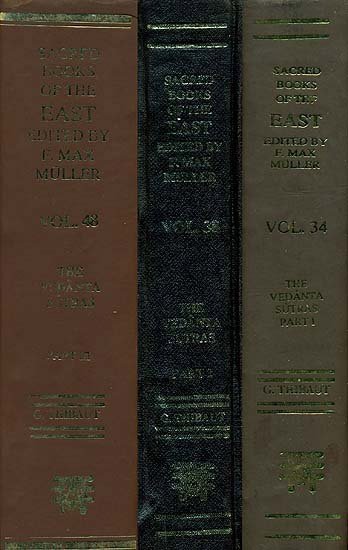Brahma Sutras (Ramanuja)
by George Thibaut | 1904 | 275,953 words | ISBN-10: 8120801350 | ISBN-13: 9788120801356
The English translation of the Brahma Sutras (also, Vedanta Sutras) with commentary by Ramanuja (known as the Sri Bhasya). The Brahmasutra expounds the essential philosophy of the Upanishads which, primarily revolving around the knowledge of Brahman and Atman, represents the foundation of Vedanta. Ramanjua’s interpretation of these sutras from a V...
Sutra 1.4.20
20. (It is) a mark indicating that the promissory statement is proved; thus Āśmarathya thinks.
According to the teacher Āśmarathya the circumstance that terms denoting the individual soul are used to denote Brahman is a mark enabling us to infer that the promissory declaration according to which through the knowledge of one thing everything is known is well established. If the individual soul were not identical with Brahman in so far as it is the effect of Brahman, then the knowledge of the soul—being something distinct from Brahman—would not follow from the knowledge of the highest Self. There are the texts declaring the oneness of Brahman previous to creation, such as 'the Self only was this in the beginning' (Ait. Ār. II, 4, 1, 1), and on the other hand those texts which declare that the souls spring from and again are merged in Brahman; such as 'As from a blazing fire sparks being like unto fire fly forth a thousandfold, thus are various beings brought forth from the Imperishable, and return thither also' (Mu. Up. II, 1, 1). These two sets of texts together make us apprehend that the souls are one with Brahman in so far as they are its effects. On this ground a word denoting the individual soul denotes the highest Self as well.
